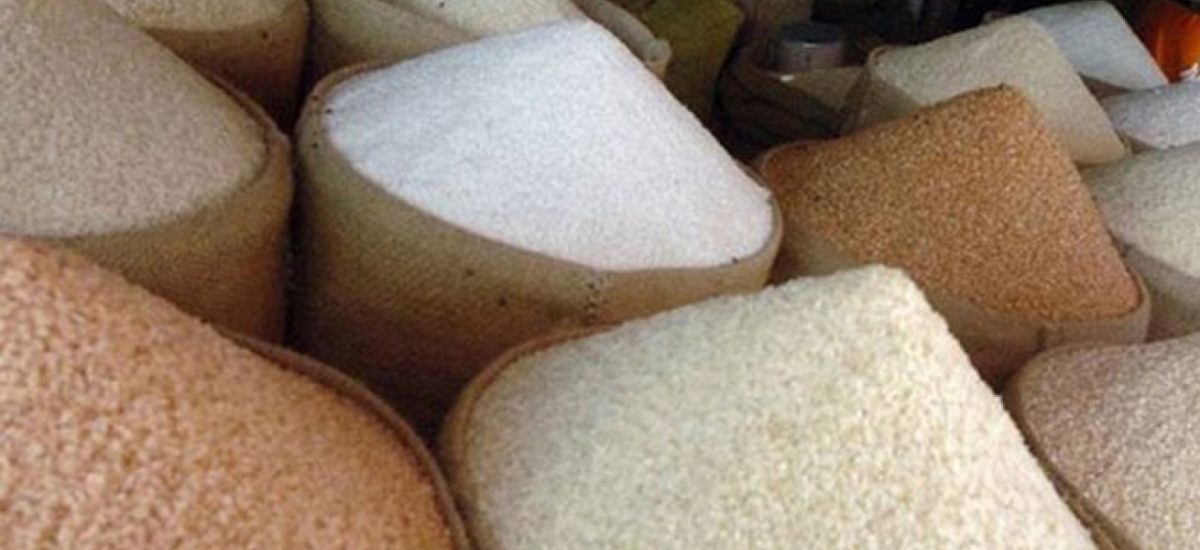Photo courtesy of Sri Lanka Mirror
Rice has played a vital role in Sri Lanka for many centuries not only because it is the staple diet but also because paddy cultivation has been the main source of livelihood for many people. Rice, as the final consumption product, has significant importance. However, farmers do not get a fair selling price for paddy while consumers cannot buy rice at a reasonable retail price. This dispute, known as the rice crisis, has given rise to an ongoing dialogue between many stakeholders in the country.
Efforts to find solutions have been made without understanding the underlying questions and factors. Competition law is a crucial segment that was missing in past attempts to find a solution to the rice crisis.
Why is there a rice crisis?
Until around 1996, the intervention of the government played a vital role in the rice market. The main government institutions, the Paddy Marketing Board (PMB) and the Multi-Purposes Corporative Societies (MPCS), were exercised authority over the market with the assistance of the government. The PMB was empowered to guarantee a price to farmers and to provide rice to consumers at an avoidable price. However, with the closure of the PMB and the implementation of the open market economy, the power that government institutions had over the market gradually weakened and private players took over.
This resulted in the government losing the controlling power over the rice price and shifting it to private players such as millers. Farmers were compelled to rely mainly on private millers because they did not possess the economic and technical infrastructure to process the paddy harvested and supply rice to consumers. Most farmers sell their paddy to private mill owners who supply rice to the market; they have large storage facilities, purchasing power and the economic stability. Because only a few large scale millers have these advantages, they enjoy a monopoly in the market with little competition.
The major reason behind low competition is the ability dominant private millers have to engage in anti-competitive practices that prevent small scale millers from purchasing paddy such as exclusive supply agreements, horizontal cartel practices and compelling farmers to sell paddy only to them. Such anti-competitive practices have resulted in excluding rival firms and reducing the number of millers in the market.
The millers become the main suppliers of rice to the market where they engage in more anti-competitive practices such as restrictive trade agreements, cartel and abusive monopoly practices to reduce competition by small scale millers at the point of selling rice to consumers. Thus, dominant millers possess the upper hand in deciding the price to consumers; they control the rice market and force consumers to pay higher rice prices.
Unless anti-competitive practices by dominant millers are controlled and regulated, it is impossible to find a permanent solution for the rice crisis. It is important to see how relevant authorities have managed and regulated the rice mafia.
The solution so far
The focus of many governments has been to control the price of rice in the market by imposing a fixed retail price. Controlling the price of consumable products falls within the ambit of the Consumer Affairs Authority Act, No.09 of 2003. Section 20(5) of the Act, which deals with consumer protection, has been the main legal provision used since it empowers the Consumer Affairs Authority to impose a maximum retail price for essential goods which traders cannot exceed.
The Consumer Affairs Authority has identified some rice variants as essential goods and fixed a maximum retail price for them to maintain a fair retail price and secure consumer welfare.
The term consumer welfare refers to two interconnected factors – the maintenance of low prices and the high number of outputs in the market. Both factors must be maintained simultaneously to reach consumer welfare. Having a fixed retail price with the use of Section 20(5) alone would address the issue only to an extent because even if dominant market players have to release rice to the market below the fixed retail price, the question remains as to how effective it would be to safeguard consumer welfare if monopoly firms exercise anti-competitive practices. For instance, if retail prices are imposed on popular rice variants, millers could encourage suppliers and consumers to buy other types of rice instead of the ones that have a fixed price. Monopoly millers could use anti-competitive practices such as making structural arrangements with suppliers and consumers, misusing monopoly power to create a shortage of government-regulated rice types and engaging in cartel practices. Thus, suppliers and consumers would have to purchase rice variants made available by monopoly millers for a higher price and monopoly firms would be in a position to manipulate the rice market, create a shortage of rice and thus impose higher rice prices. However, the rice market would automatically adjust to maintain a fair price and healthy competition to secure consumer welfare if anti-competitive practices are restricted. Having fixed a retail price for rice under consumer protection alone will not provide a permanent solution unless anti-competitive practices are properly regulated.
The way forward
The main objective of competition law is to maintain healthy competition in the market to secure consumer welfare. However, protecting traders is not the objective of competition law. Consumer welfare under the competition law is achieved by maintaining low prices and a high number of outputs by restricting anti-competitive practices. Thus, the meaning of consumer welfare has a direct link to the concept of consumer harm. Competition law aims to prohibit any anti-competitive practice such as restrictive trade agreements, abuse of monopoly and mergers that would result in consumer harm. Anti-competitive practices not only result in reducing the number of outputs in the market but also lead to an increase in the rice price.
Competition law is a good mechanism to regulate the rice market to safeguard consumer welfare because it operates against both high prices and output restrictions. As fixing high retail prices and output restriction are the main issues in the rice market, it is only competition law that can capture and control both negative outcomes.
Part III of the Consumer Affairs Authority Act, No.09 of 2003 is designed to operate against consumer harm by maintaining healthy competition in the market. The legal provisions found in Part III of the Act is the best solution the Consumer Affairs Authority has to capture and control any anti-competitive practice exercised by private millers that could operate against consumer welfare. These provisions could be used to capture any restrictive trade agreement and abuse of monopoly power exercised by private millers.
There cannot not be a permanent solution to the rice crisis created by the rice mafia unless the Consumer Affairs Authority uses competition law, along with retail price fixing, to guarantee consumer welfare.


